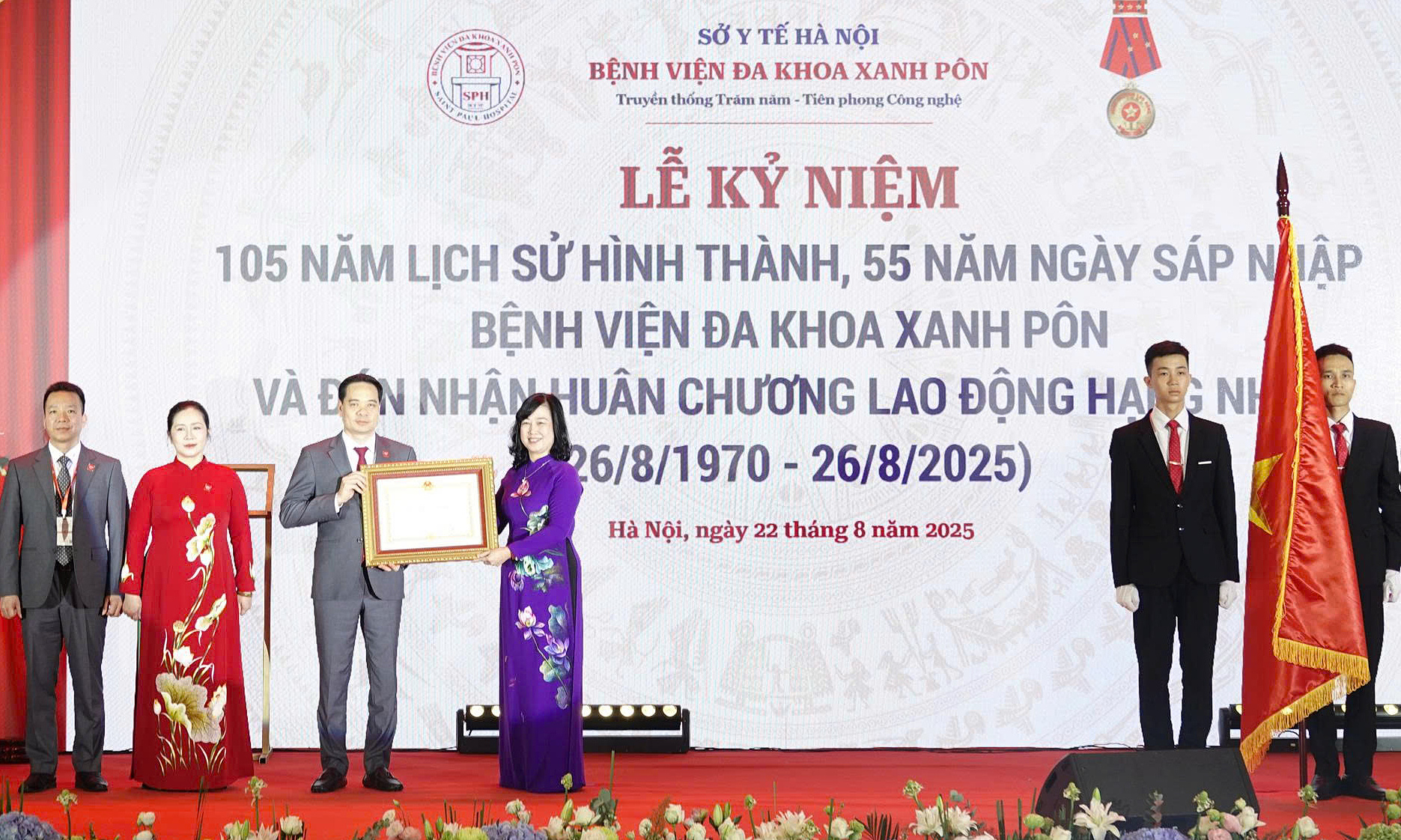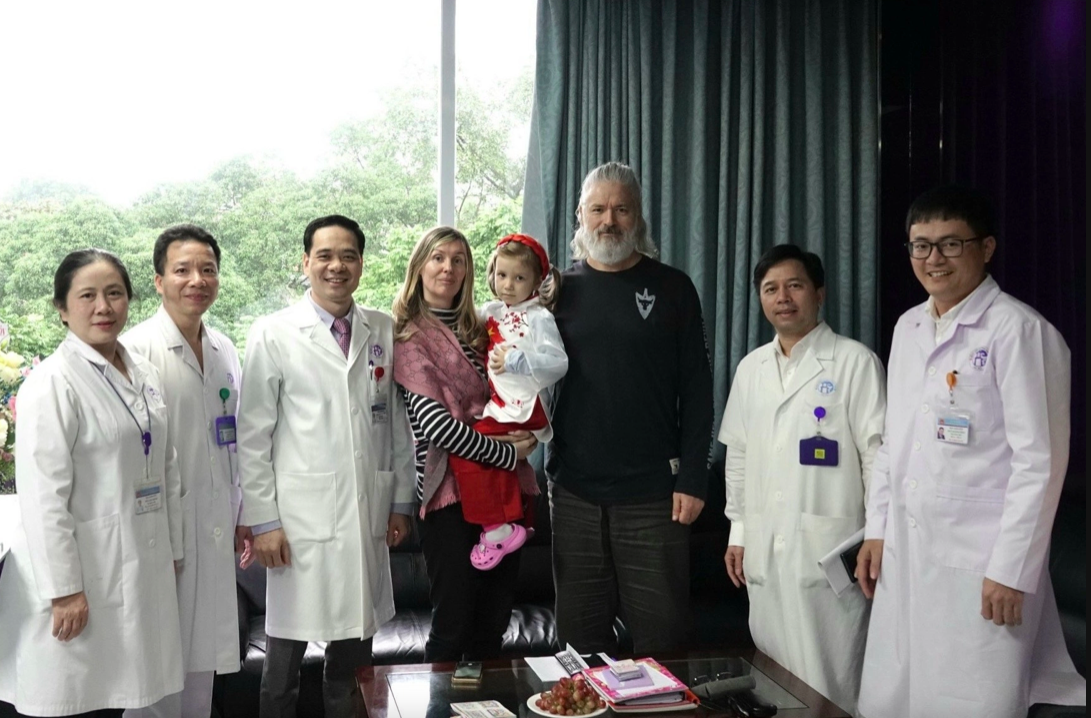From its humble beginnings as a small French colonial medical facility, Xanh Pon General Hospital has become a leading medical center implementing many modern, internationally recognized techniques, said Dr. Nguyen Duc Long, the hospital's director, at its 105th-anniversary celebration on 22/8.
Late last year, an Australian family living in Indonesia flew to Vietnam seeking surgery for their daughter's choledochal cyst at Xanh Pon Hospital. The father learned about the single-incision laparoscopic surgery technique through a paper by Associate Professor Dr. Tran Ngoc Son, the hospital's deputy director. He chose this after researching and comparing it to traditional open surgery in countries like Australia, Singapore, and France. The girl became the first international patient to undergo this procedure at the Hanoi hospital.
 |
Minister Dao Hong Lan awards a certificate of merit to a Xanh Pon Hospital representative. Photo: Trung Hieu |
Single-incision laparoscopic surgery to treat choledochal cysts is considered extremely difficult and unique. Only China had successfully performed it before 2011. This method requires only one 15 mm incision at the navel instead of the traditional three incisions. It demands highly skilled surgeons to prevent instruments from colliding while operating through the single entry point.
In 2013, Associate Professor Son published the world's first research report after successfully treating 16 cases. To date, 300 children have undergone this procedure, each operation lasting three hours, equivalent to conventional laparoscopic surgery. This achievement has attracted many specialists from Thailand, Indonesia, and Japan to the hospital for training.
The hospital's journey began in 1920 as a small 50-bed treatment facility. By 1930, it was upgraded to Xanh Pon Surgical Hospital with a 90-bed surgical department, primarily staffed by French physicians. Today, it is a class-1 hospital with 7 specialized departments and 870 beds, serving 2,000-3,000 patients daily.
The hospital has integrated artificial intelligence (AI) into many areas, such as diagnostic imaging, digestive endoscopy, and facial recognition for patient reception. The hospital has also digitized contract health check-up processes, implemented a clinical decision support system (CDSS), electronic medical records for chronic diseases, mobile applications, and mini-kiosks for payment.
This digital transformation has yielded high efficiency, reducing insurance claim errors by a factor of 10 and saving on printing, management, and document storage costs. It has also increased work efficiency, reduced medical errors, and shortened patient waiting times.
"Xanh Pon Hospital is currently focusing on investing in facilities and equipment to become a smart hospital by 2026," said Dr. Long.
 |
The Australian patient's family with the medical team at Xanh Pon General Hospital. Photo: Hospital provided |
At the 105th-anniversary celebration, Dr. Nguyen Dinh Hung, Deputy Director in charge of the Hanoi Department of Health, recognized Xanh Pon's leading position in the capital's and the nation's healthcare system. The hospital's High-Tech Center, with its specialized departments, has successfully implemented hundreds of modern medical techniques on par with regional standards. It is also the first medical facility in Hanoi to successfully perform organ transplants.
Dr. Hung proposed five key directions for the hospital's future development, emphasizing breakthroughs in high technology and precision medicine. He encouraged continued development of complex organ transplants, regenerative medicine, gene therapy, and personalized immunotherapy, aiming to establish the hospital as a leading medical center in Southeast Asia.
The hospital was awarded the first-class Labor Order in recognition of its significant contributions to public health over more than a century.
Le Nga












